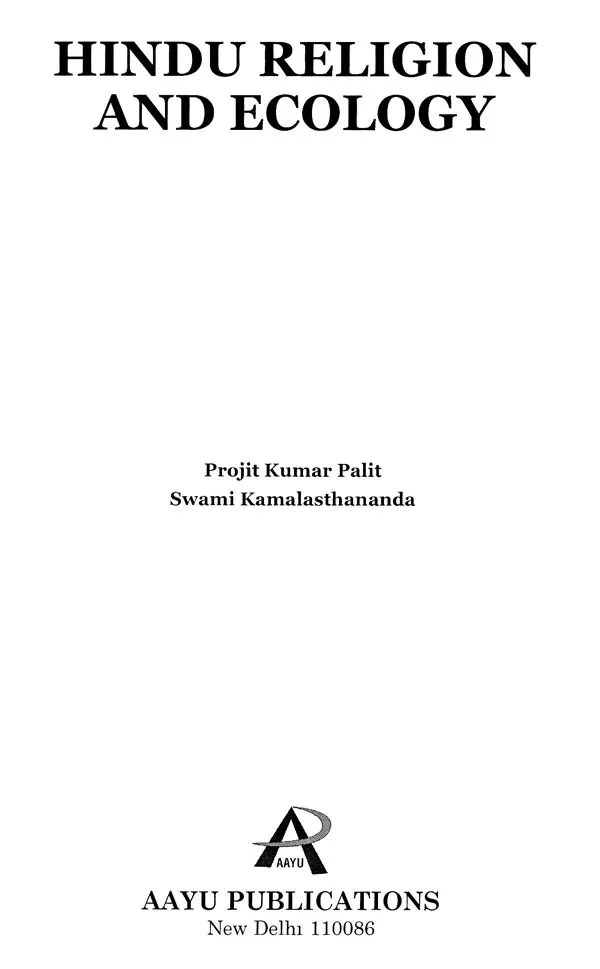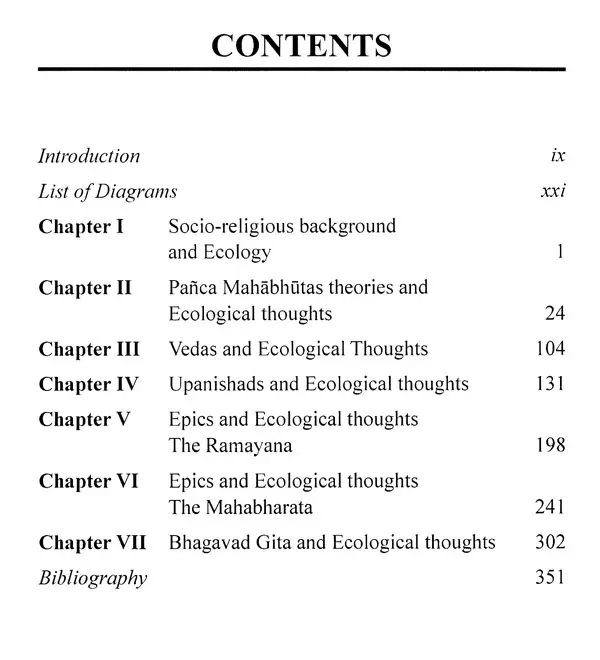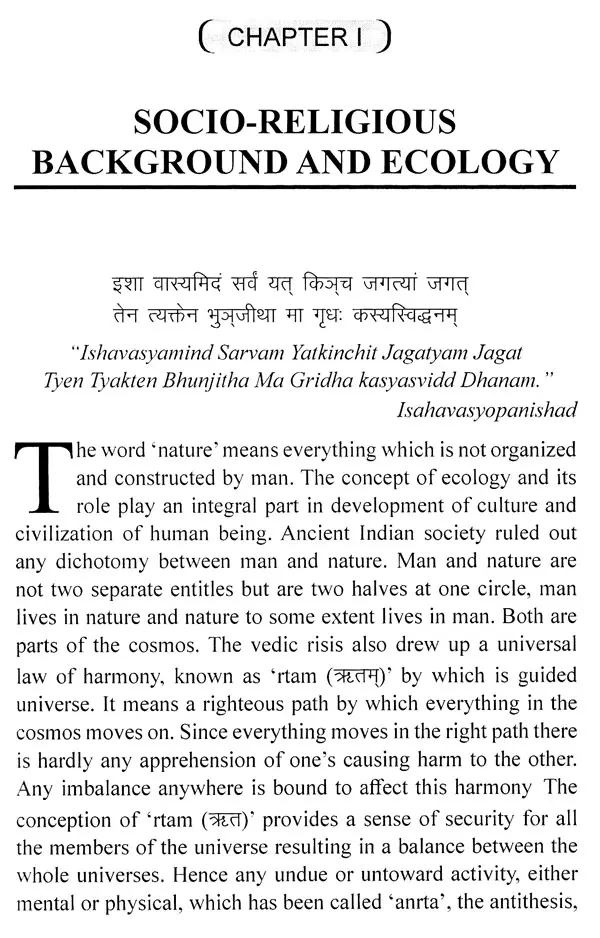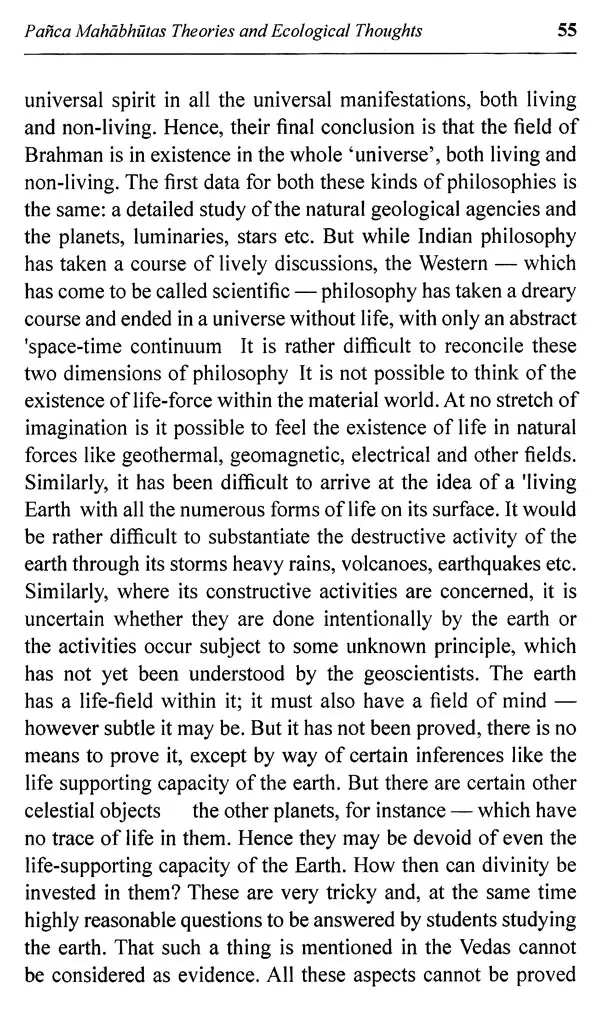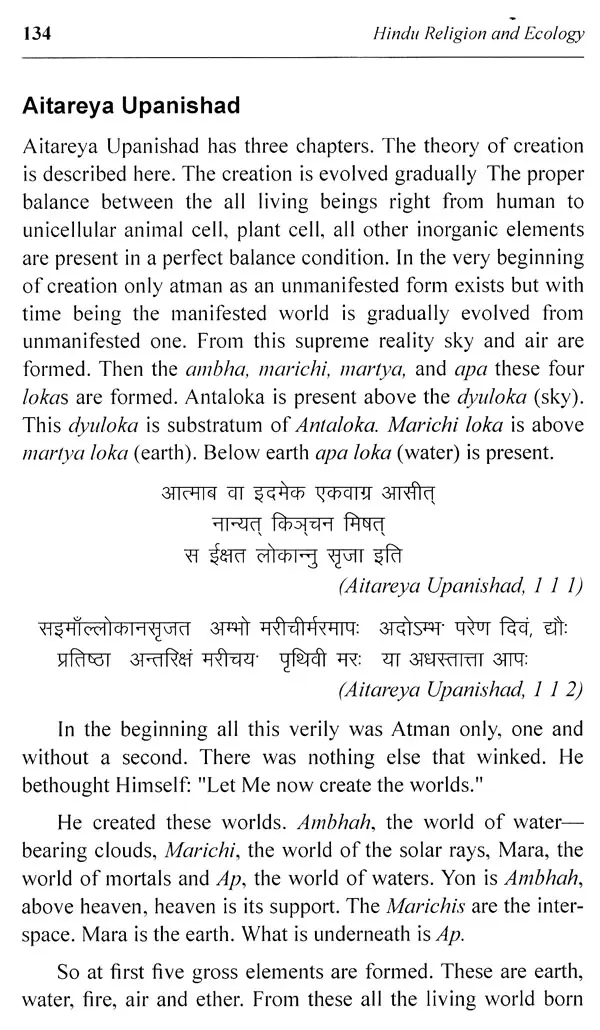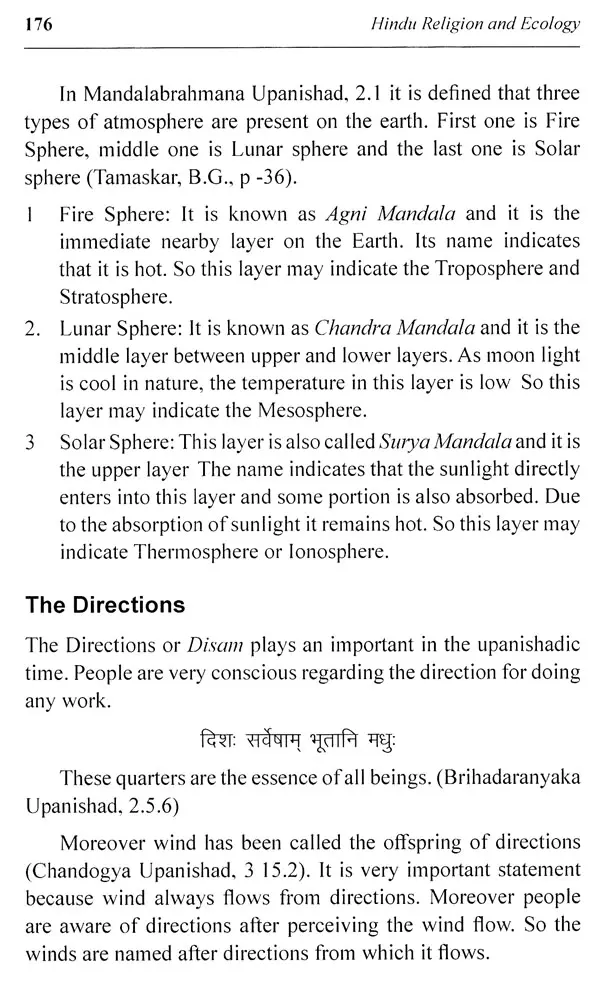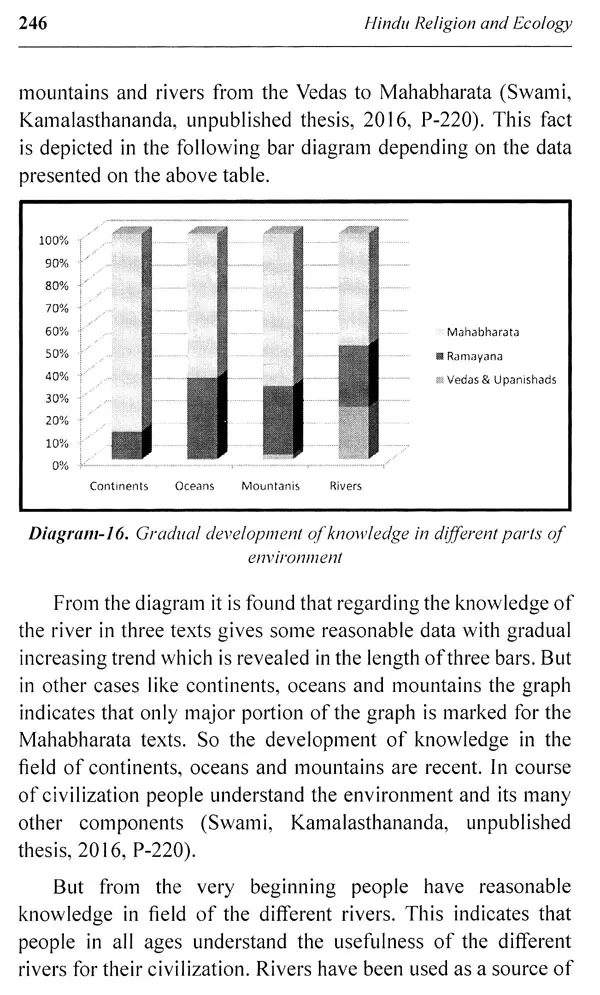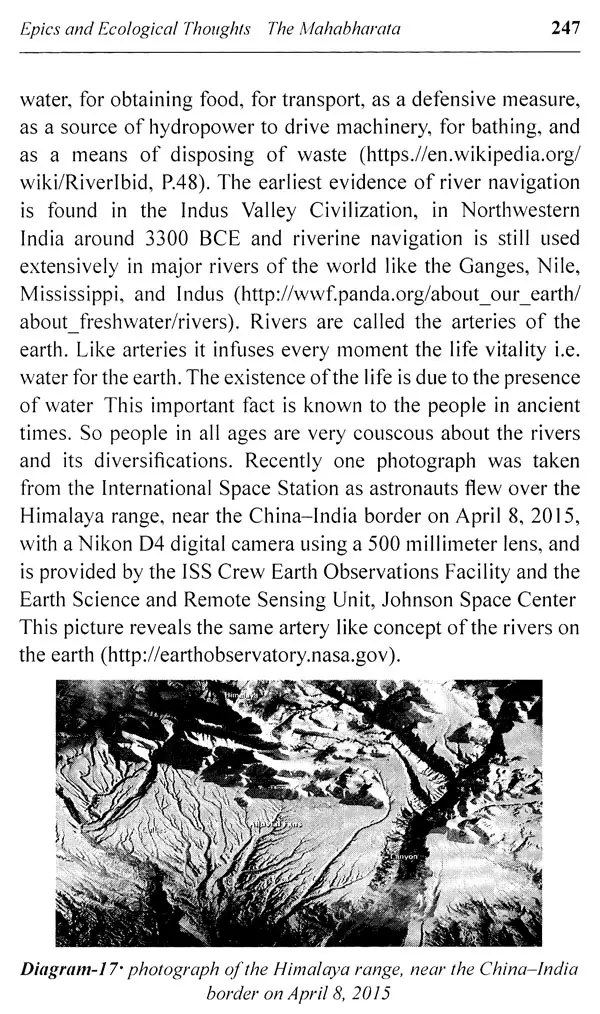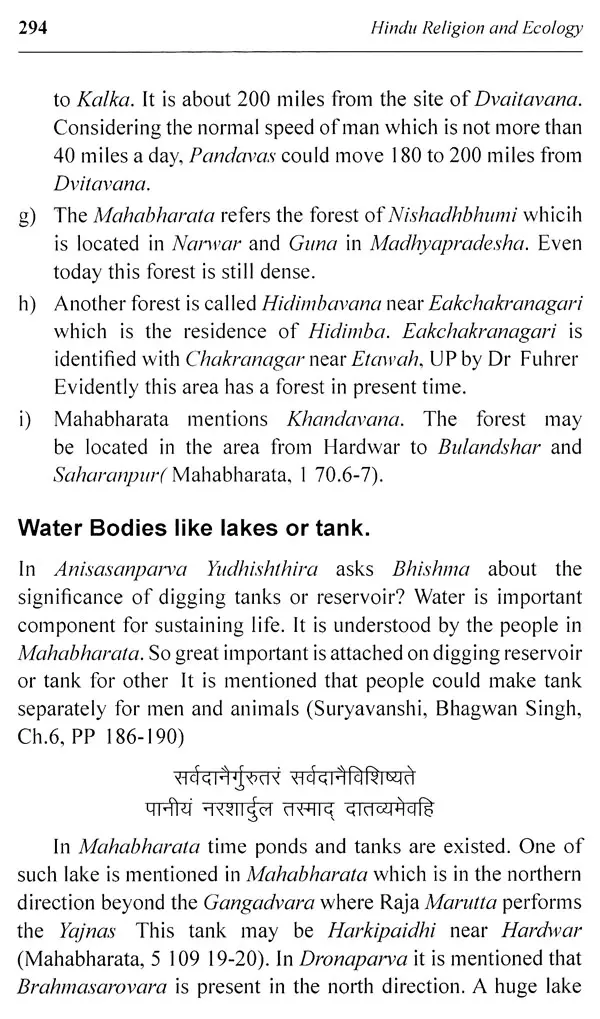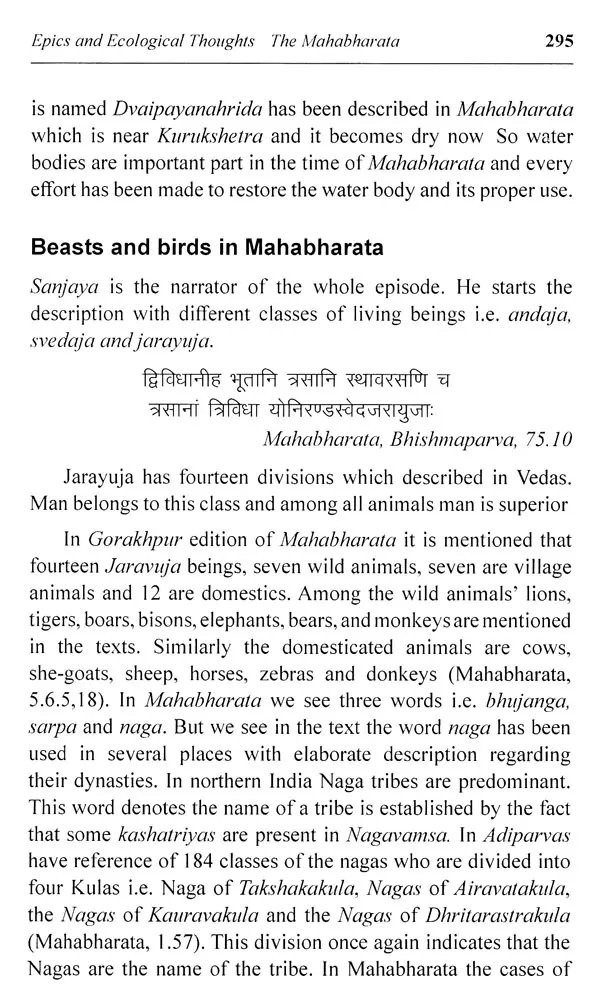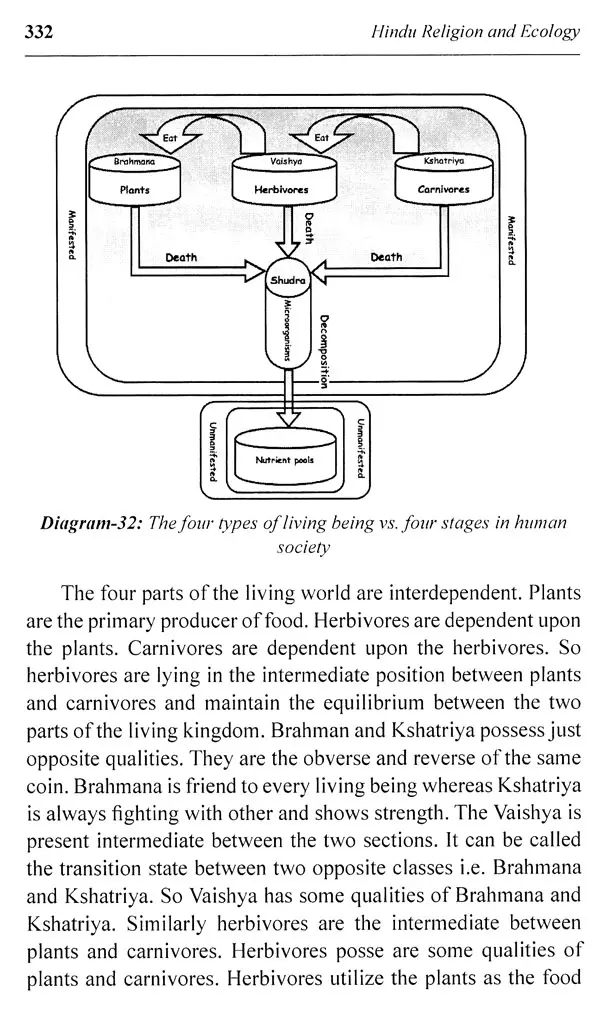
Hindu Religion and Ecology
Book Specification
| Item Code: | UAP382 |
| Author: | Projit Kumar Palit & Swami Kamalasthananda |
| Publisher: | Aayu Publications, New Delhi |
| Language: | English |
| Edition: | 2022 |
| ISBN: | 9789391685096 |
| Pages: | 394 (Throughout B/w Illustrations) |
| Cover: | HARDCOVER |
| Other Details | 9.00 X 6.00 inch |
| Weight | 630 gm |
Book Description
The concept of ecology and its role play an integral part in the development of culture and civilization of human beings. The Vedas and other Brahminical literatures universally acknowledged everything of nature which is embodied under the sun. The Vedas and other literatures deal with knowledge and the knowledge covers both ecological and philosophical aspects of nature. The oldest and simplest form of nature-worship finds expression in Vedic texts. Many scholars have come to the conclusion that the Vedas are primarily concerned with cosmology, however, they are not in a position to show that Vedic cosmology has the solutions to the most difficult problems of modern cosmology. As Sanskrit literature is so wide we refer here mainly to Vedic texts, particularly the Vedic Samhitas, Upanishads and Epics for our study of ecological awareness. The living organisms can be grouped into three types-those living mainly on land, in water and in air. The non-living materials of the environment are land, air, water, property etc. In modem Sanskrit, the word Paryavarana is used for environment, meaning which encircles us, which are all around in our surroundings but in the Atharvaveda words equivalent to this sense are used such as Vritavrita, Abhivarah, Avritah, Parivrita etc. The Vedic view on environment is well-defined in one verse of the Atharvaveda where three coverings of our surroundings are referred as Chandamsi. These are water, air and plants or herbs. They exist in the world from the very beginning. They are called as Chandamsi meaning 'coverings available everywhere. It proves the knowledge of Vedic seers about the basic elements of environment. According to one indigenous theory established in the Upanishads, the universe consists of five basic elements viz., (i) Earth or land, (ii) water. (ii) light or lustre, (iv)air, and (v) ether. The nature has maintained a status of balance between and among these constituents or elements and living creatures. A disturbance in percentage of any constituent of the environment beyond certain limits disturbs the natural balance and any change in the natural balance causes lots of problems to the living creatures in the universe. Different constituents of the environment exist with set relationships with one another. The relation of a human being with the environment is very natural as he cannot live without it. From the very beginning of creation he wants to know about it for self-protection and benefit.
Projit Kumar Palit, is working as a Professor& Director, Centre for Indological Studies, Department of History, Jadunath Sarkar School of Social Sciences, Assam University, Silchar. His authorship books are History of Religion in Tripura, Manuscript and Manuscriptology in India, Religion and Literature: Indian Perspectives, Vivekananda and National Integration, The Gospel of Sri Ramakrishna and its relevance and Manuscript and Indian culture and The Jainism and the Jaina Culture in India.
Swami Kamalasthananda Maharaj, is working as a Principal more than fifteen years at Ramakrishna Mission Vivekananda Centenary College, An Autonomous College, Rahara, Kolkata. He obtained his PhD degree from Assam University, Silchar. He has been engaged in teaching and research field of Ramakrishna thought and Religion for twenty five years. He has published more than twenty research papers and book reviews in peer-reviewed journals in India and Abroad.
" Mankind is challenging the various environmental and developmental problems. Developmental Lissues create the multiple Air, Water, Atmosphere population of human society. Humanity is suffering conflict between development and ecology (Palit. 2019), Ecological balance is two types - one is existed within human being and other is belonging family or human society. Due to climate change, human society is suffering peace and happiness from the emergence of hominins to the present day. But climate change improved human life and expanded societies and it could be helped to grow human civilization. The paleoclimatological effects encompassed the climate change over the entire history of Earth. Various sagas, chronicles, maps, local history, local literature, paintings, drawings and even rock art etc. are recorded of the climate change over the entire history of Earth. The archaeological record is equally important in establishing evidence of settlement, water and land usage. Past population levels and habitable ranges of humans or plants and animals used to find evidence of past differences in climate for the region. Palynology, the study of pollens, can show not only the range of plants and to reconstruct possible ecology, but to estimate the amount of precipitation in a given time period, based on the abundance of pollen in that layer of sediment or ice.
Climate change has been linked to human migration from as early as the end of the Pleistocene to the early twenty-first century (R. P. Wright, 2010). The effect of climate on available resources and living conditions such as food, water, and temperature drove the movement of populations and determined the ability for groups to begin a system of agriculture or continue a foraging lifestyle (S. Ratnagar, 2002).
Book's Contents and Sample Pages
